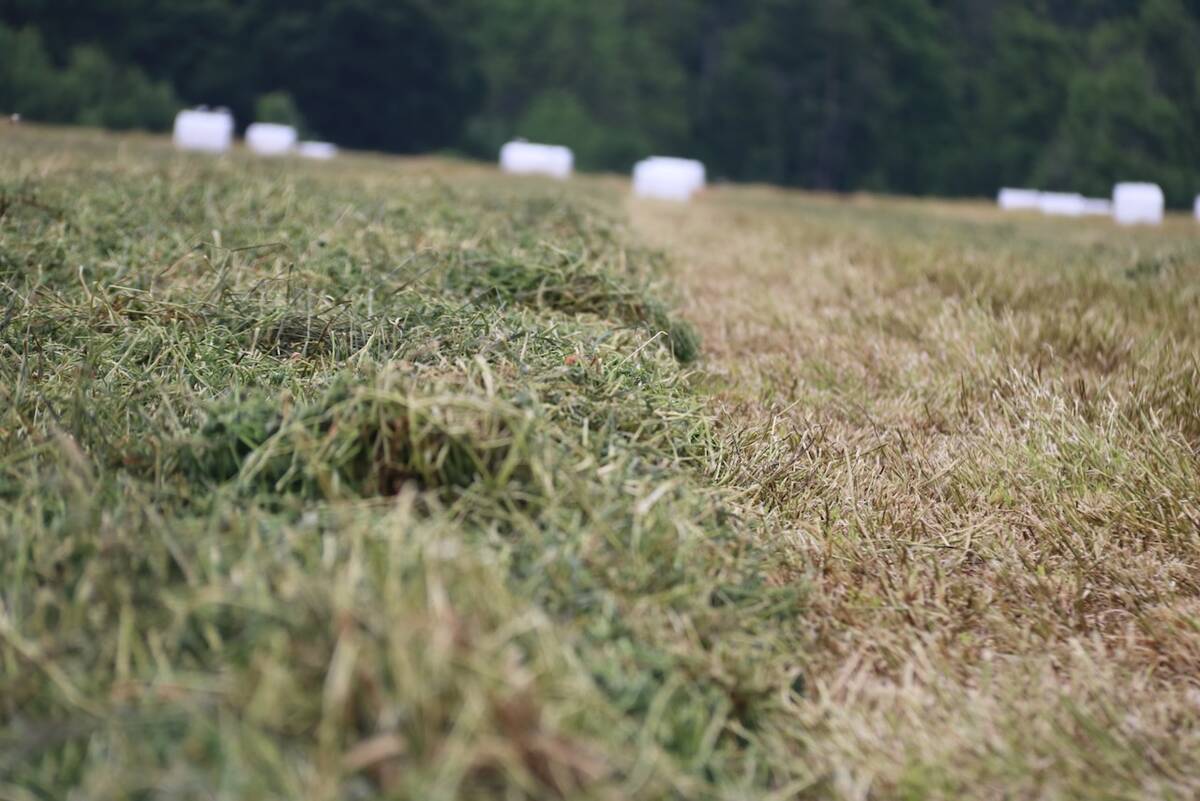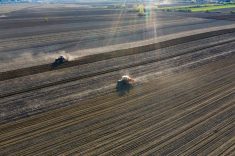Soybean acreage in Manitoba and Saskatchewan has rocketed up in recent years. Most of this growth is due to Ron Gendzelevich
If you ask western Canadian farmers when soybeans were first commercially grown in Manitoba, most would probably guess sometime around 1998. But soybeans have actually been grown in Manitoba for much longer than that — since 1992. Their numbers have increased dramatically with thanks almost entirely to one man, Ron Gendzelevich, owner and President of Quarry Seeds.
Building a dream
Although Gendzelevich comes from a farming background, he did not inherit his family farm. Instead, he built his own dream, starting from nothing. After graduating with a degree in plant science from the University of Manitoba in 1981, he worked for a number of agri-businesses, including Cargill. Eventually, in 1989, he bought a small farm northeast of Stonewall, Man., and started experimenting with cash crops, including corn, soybeans, navy beans, canary seed and lentils. After testing them for three years, he finally settled on soybeans and canary seed. At that time, Gendzelevich’s 40 acres of soybeans represented half of Manitoba’s entire market.
Read Also

New high-performance forage training program to launch in 2026
A new Canadian Forage and Grasslands Asssociation high-performance forage program will be a resource for farmers, agronomists and others in the forage sector.
“I believe I was 50 per cent of the market share for soybeans,” says Gendzelevich. “There were approximately 80 acres growing that year, and I had 40 acres of it. So it gives you an idea of where we were.”
Since that time, soybean acres have exploded in Manitoba. According to Statistics Canada, on the national level, soybean area rose 10.5 per cent from 2012 to 2013, reaching a record area of 4.6 million acres in 2013. Interestingly, though, soybean acres in Ontario, where most Canadian soybeans are grown, declined by 1.5 per cent to 2.6 million acres. The most substantial increase was seen in Manitoba, where acreage is up 35.6 per cent. In fact, it is the sixth consecutive increase in soybean area for Manitoba.
Agronomics
Back in 1992, Manitoba soybeans amounted to a shockingly low 80 acres in total. Why weren’t Manitobans embracing soybeans the way farmers out east were?
It comes down to agronomics, says Gendzelevich. Manitoba’s highly calcareous colder soils were inhibiting inoculant development on soybean plants. On top of that, Manitoba soil tends to be very moist in the spring, which is not desirable for soybean rhizobium development. It means less nodulation, and therefore, lower yields.
“I was very much struggling with how to properly get these beans to nodulate,” says Gendzelevich. “It took several years to catch on.”
While Gendzelevich was getting advice “from all over the place,” none of it truly addressed his needs, until someone out of Ontario suggested he use a liquid and peat combination. “Finally, after a lot of frustration — using liquids, liquids and peats, doubling up the liquids, and doubling up the liquids and peats — it got a little bit better, but it still wasn’t quite there. It wasn’t until about five years later that finally I stumbled onto the fact that there was another formulation of inoculant. It was called granular inoculant.”
That was in 1996. With granular inoculant, yields bumped from 24 to 28 bushels per acre to about 38 bu./acre. “The key thing we noticed is that the nodulation was intense. It was just loaded with so many nodules that you couldn’t count them. And it was reflected in the plant growth and the plant health and development.”
Promotion
All along, as Gendzelevich worked for other companies, he was promoting the possibility of soybean crops in Manitoba. “It wasn’t until about 1998 or 1999 that the seed growers in the local area started to embrace it,” says Gendzelevich.
By 2002, farmers and dealers started to introduce better agronomic practices, such as granular inoculants with liquid, but they were still nowhere near perfect. Soybean area in Manitoba at the time was just breaking the 100,000-acre mark.
“There was a lot of success in the late 1990s and early 2000s where the beans were yielding just below 32, maybe as high as 40 bushels, and that was good,” says Gendzelevich. “The variety selection had something to do with that too. Instead of having maybe one or two varieties to choose from, you had a half a dozen or better that were good, viable varieties.”
In 2002, Gendzelevich decided to quit working for other people and started his own company: Quarry Seed.
“It wasn’t until about 2004 — and in that time period of time, I was actively looking for better ideas and also a chance to somehow redefine our company. And one of the things I noticed was that there were Roundup Ready soybeans in the States being grown.”
Gendzelevich says that weed control was soybeans’ other weakness. “Conventional chemistry had a tendency to be a little weak at best. And soybeans were notorious for being a little dirty with weeds. I thought a Roundup Ready package would make growing soybeans more attractive because beans are relatively non-competitive at the early stages of its development.”
Finally, after several meetings with key individuals in the U.S., Quarry, in conjunction with Thunder Seeds out of Fargo, North Dakota, succeeded in getting a license to market Roundup Ready soybeans from Monsanto in 2005. At the time, though, there was a major lack of information from extension organizations — a source of constant frustration for growers. “There was no real pertinent information with regards to seeding rates and seeding dates, fertility and fungicides and all that kind of stuff,” says Gendzelevich.
In 2006, Gendzelevich took matters into his own hands and invested in putting up replicated agronomic trials on a five-acre site at Oakville, Man. Without this information, making recommendations to Manitoba farmers was nearly impossible.
Gendzelevich invited farmers to come and see the results of the trials for themselves at an event he calls the Valley Soybean Expo. Hosted by Quarry Seed, each year, some 200 to 250 farmers visit the Expo to learn more about growing soybeans successfully. “Now we taken it even further where we have approximately six to eight other replicated sites throughout Manitoba and Saskatchewan where we continue to do the fine-tuning where there are regional differences with regards to best agronomic practices that should be adopted by farmers,” says Gendzelevich. “We’ve found, in most cases, that agronomy is the big driver for yields.” Quarry Seed’s replicated trials can be found in Niverville, Stonewall, Beausejeur, Morris and Altona, Man., as well as Saltcoats, Regina and Halbrite, Sask.
Marketing soybeans
While one would think that the marketing side of things would be more challenging than the agronomic side, the opposite is true when it comes to soybean production in Manitoba. In fact, Gendzelevich says there were very few issues when it came to marketing. “Back then, because beans were new, the existing grain companies didn’t want to tie up bins in their elevator facilities, so a lot of the soybeans ended up getting directly shipped down into the States,” says Gendzelevich.
Later, elevator companies started to get involved, but they graded the beans very cautiously, creating a new for small independent grain buyers to get involved to help that process. Soybeans are still shipped directly to the U.S., but close to half are now shipped by rail out west to Vancouver and Portland for export, as well.
Gendzelevich is positive about the future of soybeans in Western Canada. He believes that Manitoba will eventually level off at the two million acre mark, while acres will continue to increase in both Saskatchewan and Alberta, although Alberta’s cooler overnight temperatures make growing soybeans there more challenging.
As for Quarry Seed, they currently have 10 full-time staff and show no signs of slowing down. Gendzelevich hopes to increase his reach, ever so slowly, into the neighbouring provinces, and recently received his Roundup Ready corn license. †















